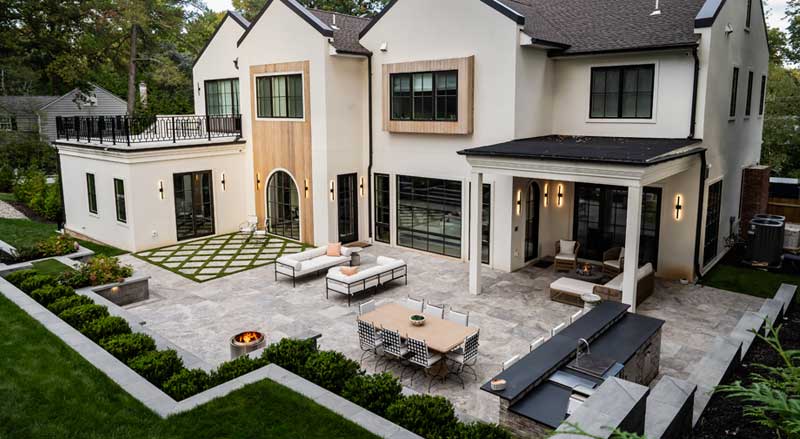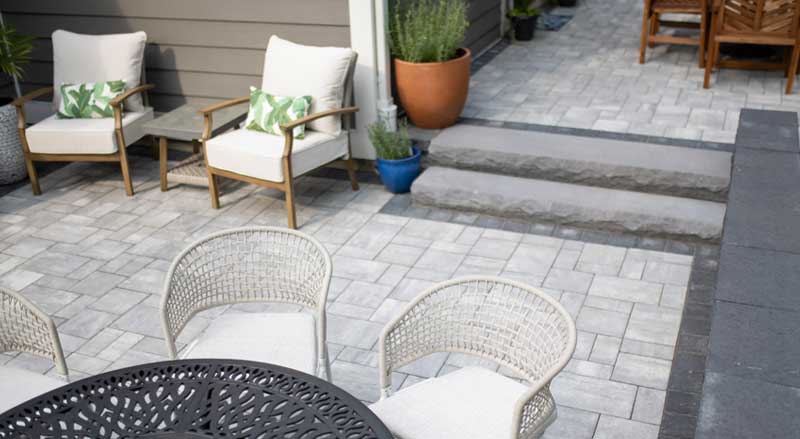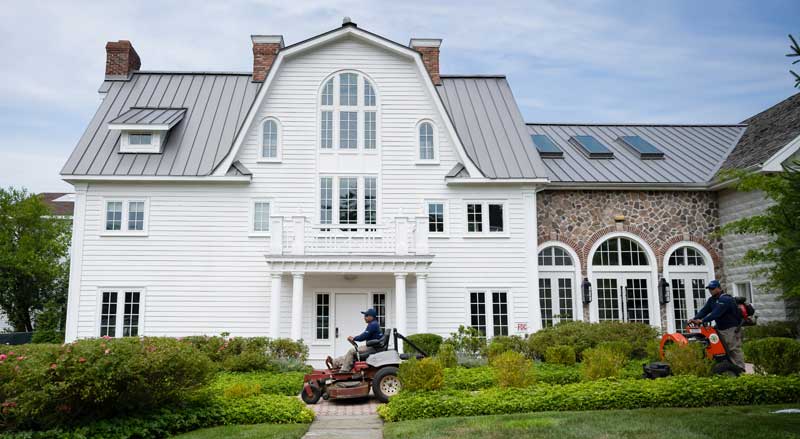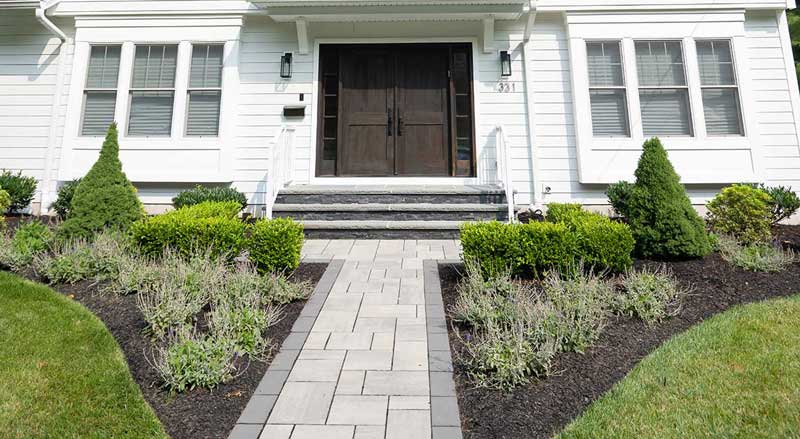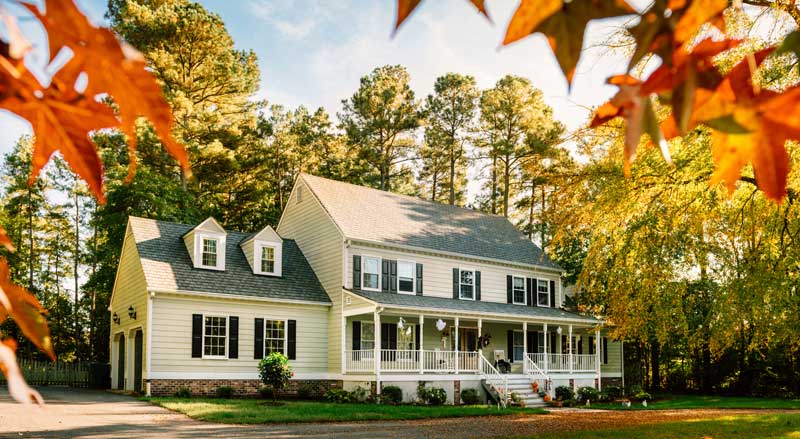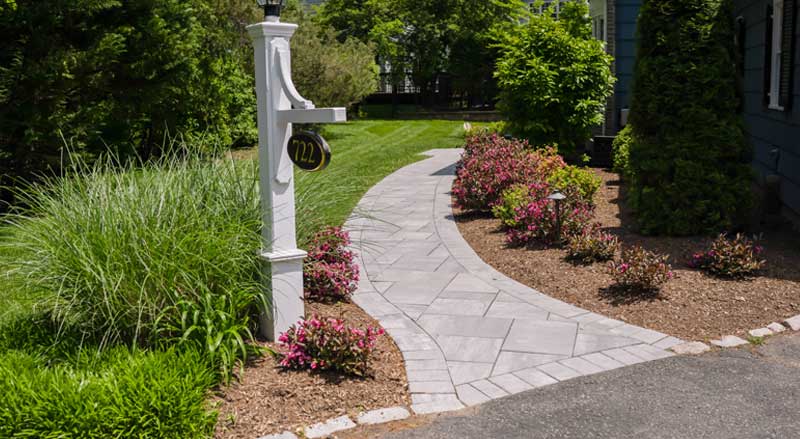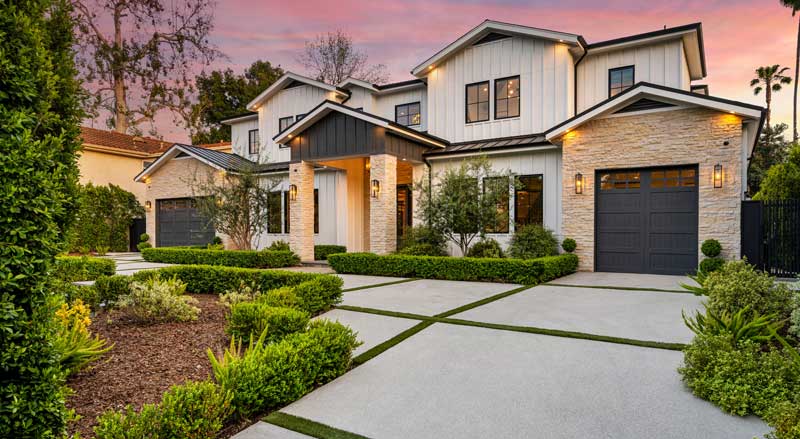Transform your outdoor space into a welcoming retreat with a custom-designed patio from Landscape Solutions. Whether you envision a cozy gathering area for family and friends or a stylish space for outdoor dining and entertaining, our team of hardscape experts brings your vision to life with precision and creativity.
Every patio we design is tailored to your lifestyle, property, and personal taste. From selecting the perfect materials—such as natural stone, pavers, or brick—to crafting a layout that enhances your landscape, we ensure a seamless blend of form and function.
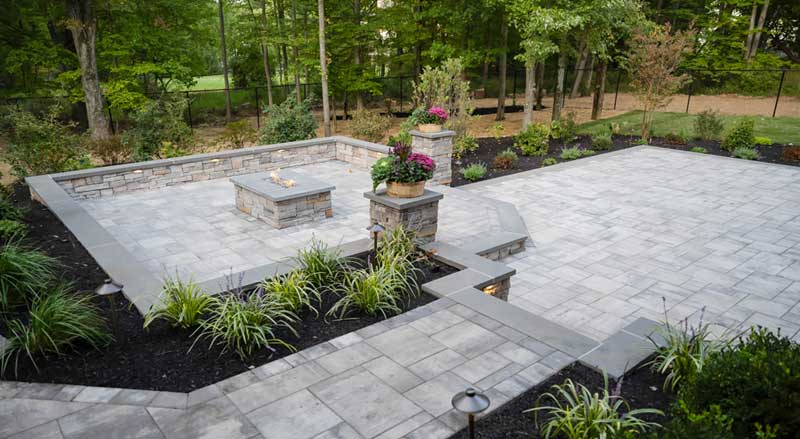
Essential Guidelines to Consider When Designing Your Patio.
In addition to creating a beautiful and usable outdoor space, thoughtful patio design plays a key role in stormwater management. Managing runoff is critical for protecting both your property and the environment. The State of NJ Department of Environmental Protection has specific guidelines for stormwater management you can find here.
Our experienced team ensures compliance and carefully considers the balance between impervious and pervious surfaces to help control water flow, reduce erosion, and limit the strain on local stormwater systems.
Do I Need a Permit to Build a Patio?
Many communities have guidelines and regulations surrounding impervious surface ratios, which affect how much of your property can be covered by hardscape materials. Exceeding these limits can lead to drainage problems, soil degradation, and fines.
At Landscape Solutions, we help you navigate these considerations from the start—incorporating innovative design features like permeable pavers, strategic grading, and drainage solutions that meet local codes while enhancing the beauty and function of your outdoor space.
Adding a patio to your home can enhance your outdoor living space and increase property value. However, before you start construction, it’s crucial to understand how your new patio construction can impact drainage and the overall environment. You should also be aware that permits are typically required.
Understanding Patio Permit Requirements
In New Jersey, constructing a patio often requires obtaining permits to ensure compliance with local building codes and zoning ordinances. Permits help maintain safety standards, proper drainage, and adherence to property boundaries. Failing to secure the necessary permits can lead to fines, mandated removal of the structure, or complications when selling your home.

Livingston, NJ
In Livingston, a permit is required for constructing a new patio. Specifically, a Lot Surface Drainage Permit is necessary if the project involves creating a new impervious area greater than 200 square feet. A zoning permit may also be required to ensure the patio complies with local zoning regulations.
Permit applications must include a scaled plot plan indicating the limits of the proposed work and a $40 permit fee. For more detailed information and to access application forms, visit the Livingston Township Permits page
Short Hills (Millburn), NJ
Millburn Township, which encompasses Short Hills, requires permits for landscaping projects that impact impervious surfaces and stormwater management. The Township grading permit system ensures compliance with erosion, drainage, and site grading regulations. Specifically, the Township has rules for:
Impervious Surface Limits:
Landscaping projects that increase impervious coverage (like patios) may require a grading permit, especially if they exceed 200 square feet, and a drywall or other stormwater detention system may be needed.
Grading Permit:
Required for projects involving land disturbance not exempt, including those exceeding 200 square feet of new impervious area, according to the Township of Millburn, NJ. Depending on the work scope, a minor or major grading permit may be required. Please review this Millburn Township website to understand.

Chatham, NJ
In Chatham, permit requirements for patios depend on the project’s scope. Generally, a permit is required if the patio involves significant excavation, grading, or the addition of impervious surfaces. It’s essential to check with the Chatham Building Department for specific guidelines related to your project.
Florham Park, NJ
Florham Park requires permits for patio construction, mainly when the project includes changes to the property’s drainage or involves significant land disturbance. Like many municipalities in New Jersey, Florham Park has regulations regarding the amount of impervious surfaces (like paved areas, patios, pools, and walkways) allowed on a property.
Per NJDEP regulations, projects with increased impervious surfaces must incorporate stormwater management practices. Projects might need to include dry wells, rain gardens, or other measures to manage the increased runoff.
Landscaping projects that significantly increase impervious coverage would require permits. Homeowners should contact the Florham Park Building Department to determine the requirements and obtain the necessary applications.

Madison, NJ
In Madison, constructing a patio typically requires obtaining a building permit. The requirements may vary based on the size and complexity of the project. For example, if a project significantly increases the impervious area on a property, a permit may be required.
Like other municipalities in NJ, the Township of Madison is required to comply with the State of New Jersey Stormwater Management rules (N.J.A.C. 7:8).
It’s recommended that you consult with the Madison Building Department to ensure compliance with local regulations and acquire the appropriate permits.
General Steps to Obtain a Patio Permit in New Jersey
- Consult Your Local Building Department: Before starting your project, contact your municipality’s building department to understand specific requirements.
- Prepare Necessary Documentation: This typically includes a detailed site plan, construction drawings, and information about materials.
- Submit Your Application: Complete the required forms and submit them along with any applicable fees.
- Await Approval: The building department will review your application and may request additional information or modifications.
- Schedule Inspections: Once your permit is approved, you’ll need to schedule inspections at various stages of construction to ensure compliance.Livingston Township

Conclusion
Building a patio is an excellent way to enhance your home’s outdoor space, but navigating the permitting process is essential. Requirements vary significantly between municipalities, so consult your local building department before beginning any construction. By securing the necessary permits, you ensure that your project complies with local regulations, saving you time, money, and potential legal issues in the future.
For professional assistance with your patio project, including navigating the permitting process, contact Landscape Solutions. Our experienced team is here to help you create the outdoor space of your dreams while ensuring full compliance with local regulations.

